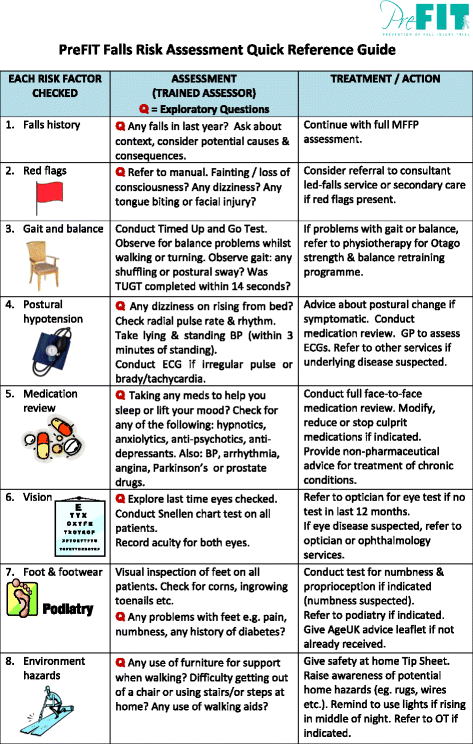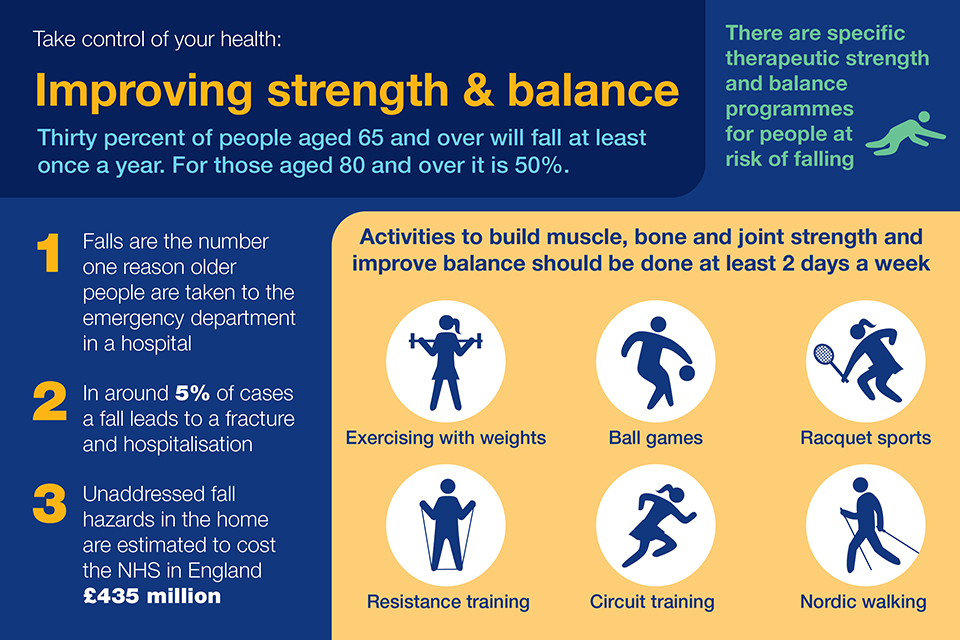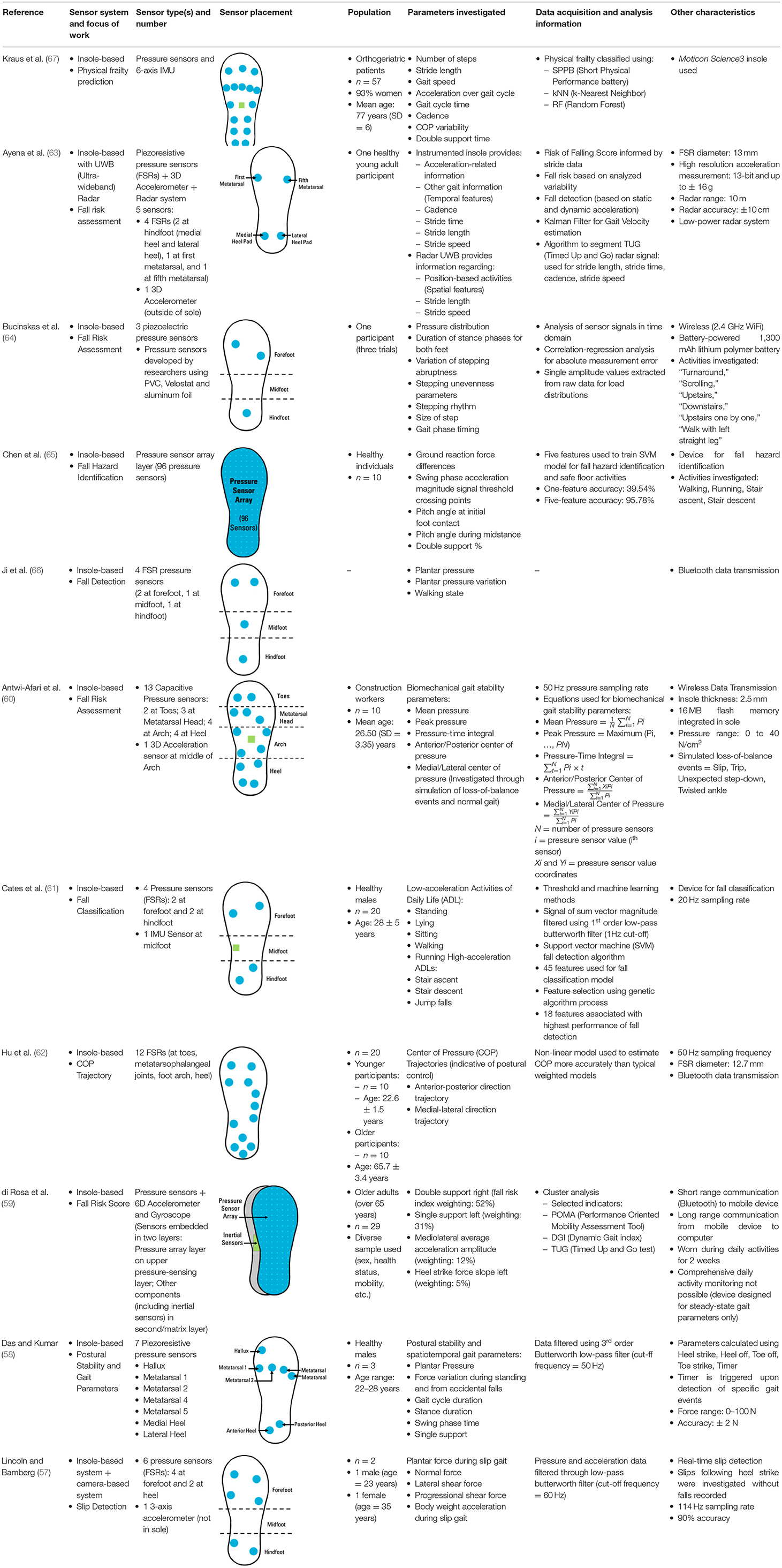The Ultimate Guide To Dementia Fall Risk
Table of ContentsA Biased View of Dementia Fall RiskFascination About Dementia Fall RiskHow Dementia Fall Risk can Save You Time, Stress, and Money.4 Easy Facts About Dementia Fall Risk ExplainedThe 7-Minute Rule for Dementia Fall Risk
In the community, inadequate street illumination or unprotected creeks and landfills might also create accidents. Loss Danger Analysis Device (FRAT) is a 4-item falls-risk screening tool for sub-acute and property treatment. The FRAT has 3 sections: drop threat condition, threat factor list, and action strategy. A Loss Risk Status consists of information about background of current falls, medications, psychological and cognitive status of the patient.If the person scores on a threat factor, the matching number of factors are counted to the person's autumn risk score in the box to the much. If a person's fall danger rating completes 5 or greater, the individual goes to high threat for falls. If the patient scores only four factors or reduced, they are still at some danger of falling, and the nurse needs to use their finest scientific assessment to manage all loss threat variables as component of an all natural care plan.
These common methods, in basic, aid develop a risk-free environment that decreases unintentional falls and delineates core preventive measures for all patients. Signs are crucial for individuals at danger for drops.
Everything about Dementia Fall Risk
Wristbands should include the client's last and very first name, date of birth, and NHS number in the UK. Only red shade should be made use of to indicate unique client standing.
Items that are too much might need the individual to connect or ambulate needlessly and can potentially be a threat or contribute to drops. Helps avoid the individual from heading out of bed without any aid. Registered nurses respond to fallers' phone call lights faster than they do to lights started by non-fallers.
Visual disability can substantially trigger drops. Maintaining the beds closer to the flooring minimizes the risk of drops and major injury. Putting the mattress on the flooring substantially reduces loss risk in some health care setups.
What Does Dementia Fall Risk Do?
Individuals that are tall and with weak leg muscular tissues that attempt to rest on the bed from a standing placement are most likely to drop onto the bed since it's as well low for them to decrease themselves securely. Also, if a tall patient attempts to rise from a reduced bed without aid, the individual is most likely to fall back down onto the bed or miss the bed and drop onto the check it out flooring.
They're designed to promote prompt rescue, not to protect against drops from bed. Apart from bed alarms, increased supervision for high-risk patients also might aid stop drops.

People with an evasion gait rise loss opportunities significantly. To reduce fall danger, footwear ought to be with a little to no heel, slim soles with slip-resistant step, and sustain the ankles.
Getting My Dementia Fall Risk To Work
In a research, homes with appropriate lighting report fewer drops (Ramulu et al., 2021). Renovation in illumination at home may decrease loss prices in older grownups.

Caretakers work for assuring a safe, safeguarded, and risk-free atmosphere. Nonetheless, researches demonstrated extremely low-certainty proof that caretakers decrease autumn risk in intense care health centers and only moderate-certainty that alternatives like video tracking can reduce sitter use without enhancing autumn danger, suggesting that sitters are not as helpful as at first believed (Greely et al., 2020).
Some Known Questions About Dementia Fall Risk.

Boosted physical conditioning decreases the risk for drops and limits injury that is received when loss takes place. Land and water-based exercise programs may be likewise helpful on balance and stride and thus minimize the risk for drops. Water exercise may add a positive advantage on balance and stride for ladies 65 years and older.
Chair Surge Exercise is a straightforward sit-to-stand workout that aids reinforce the muscle mass in the upper legs and buttocks and enhances movement and self-reliance. The goal is to do Chair Increase workouts without utilizing hands as the client ends up being stronger. See resources area for a thorough direction on how to perform Chair Increase exercise.